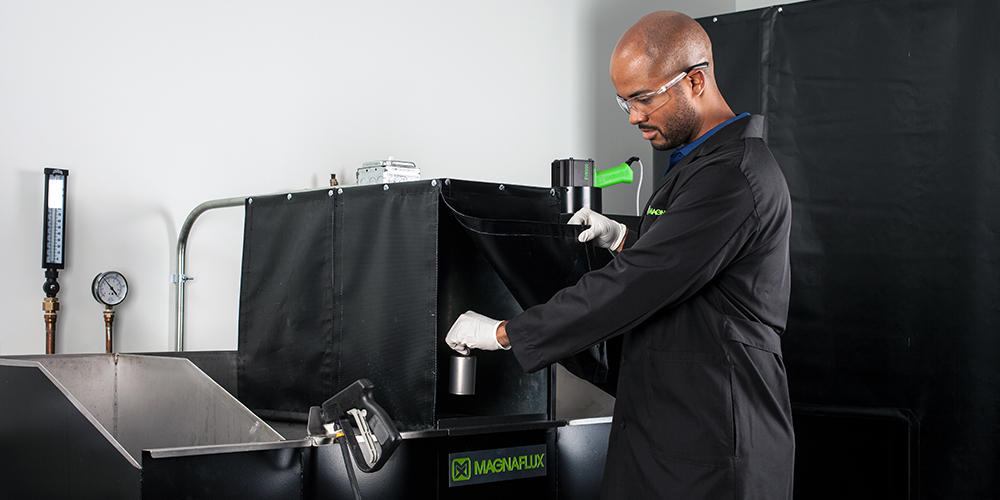October 3, 2017

Our customer is a global manufacturing company that specializes in the inspection of components for the aerospace and defense sectors. Their work requires the use of high sensitivity penetrants in compliance with the specification requirements outlined in AMS 2644.
Our customer received a request for two requirements from their downstream customer:
Our customer was familiar with in-use testing of penetrants and were confused by this request since they did not feel that:
The key point is to understand the differences between type testing, batch testing and in-use testing:
When seeking approval for a penetrant in accordance with material specifications such as AMS 2644 and EN ISO 3452-2, the penetrant manufacturer is responsible for getting the product type-tested. This involves sending a sample of the penetrant off to an independent laboratory for verification against a comprehensive set of standard tests. These tests are referred to as the ‘qualification tests’.
During the routine manufacture of a penetrant and its associated consumable products, it is a requirement under material specifications such as AMS 2644 and EN ISO 3452-2 for the manufacturer to carry out several batch-specific tests.
These specifications also specify the sampling rate and dictate that results should be published on a certificate of conformance. These tests are referred to as the ‘acceptance tests’. Under AMS 2644, the acceptance tests are as follows (see table below):
| Product Type | Test | AMS 2644 Reference |
| Penetrant | Flash point | 3.3.3 |
| Viscosity | 3.3.4 | |
| Fluorescent brightness (Type 1 systems only) | 3.3.8.3.2 | |
| Water tolerance (Method A only) | 3.3.8.5 | |
| Removeability | 3.3.8.6 | |
| Emulsifier | Flash point | 3.3.3 |
| Viscosity | 3.3.4 | |
| Water content (Method D only) | 3.3.9.6 | |
| Developer | Developer fluorescence | 3.3.10.2 |
| Developer removability | 3.3.10.4 | |
| Redispersibility (Forms c, d and e only) | 3.3.10.5 |
There is no reference for in-use tests within the AMS or EN-ISO standards. When a penetrant is used by a company carrying out inspection, they need to carry out a set of in-use tests. ASTM E1417 established standards for performance checks for in-use materials (see table below).
You can find more information on these tests here. You will also find details about our PeneCert™ testing service, where in-use tests are carried out using an independent laboratory.
| In-Use Test | Frequency |
| System performance | Daily |
| Penetrant contamination | Daily |
| Developer contamination (soluble and suspendable) | Daily |
| Developer concentration (soluble and suspendable) | Weekly |
| Developer condition – dry powder | Daily |
| Water content (water washable only) | Monthly |
| Emulsifier concentration (hydrophilic Only) | Weekly |
| Penetrant sensitivity | As required by 7.8.3 |
| Fluorescent brightness – measured brightness | Quarterly |
| Emulsifier water content (lipophilic only) | Monthly |
| Penetrant removability (water washable only) | As required per 7.8.3 |
| Emulsifier removability (lipophilic and hydrophilic) | As required per 7.8.3 |
The above information was relayed to the downstream customer, clarifying where testing responsibilities lie. Magnaflux is always willing to help our customers answer important questions such as this one.
JOIN OUR MAILING LIST TO RECEIVE THE LATEST NDT INSIGHTS AND ARTICLES FROM MAGNAFLUX
JOIN OUR MAILING LIST TO RECEIVE THE LATEST NDT INSIGHTS AND ARTICLES FROM MAGNAFLUX
155 Harlem Avenue
Glenview, IL 60025, USA
Telephone: +1 847-657-5300
Contact Magnaflux Customer Service